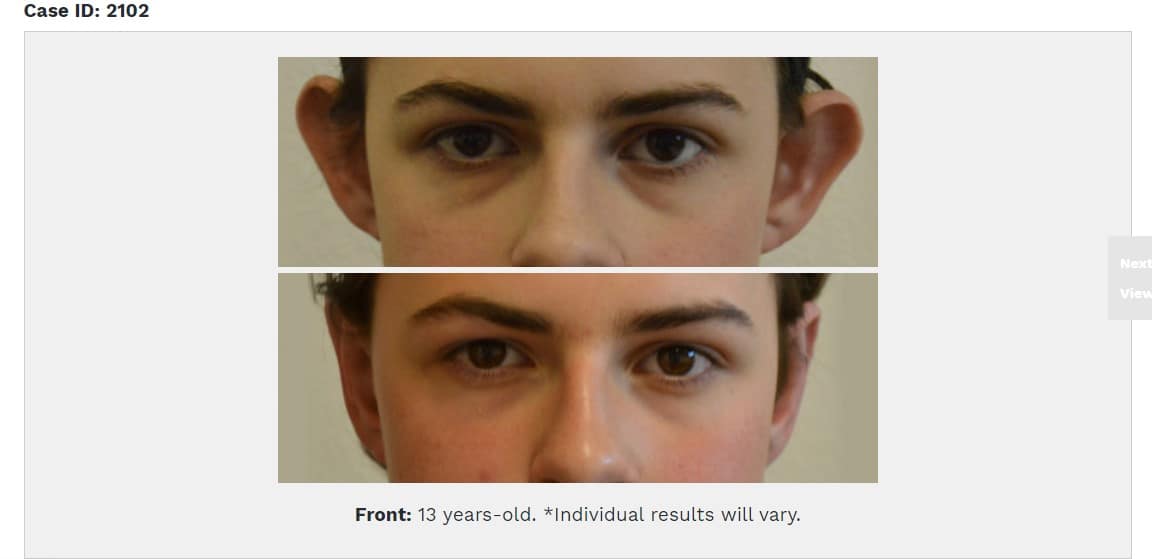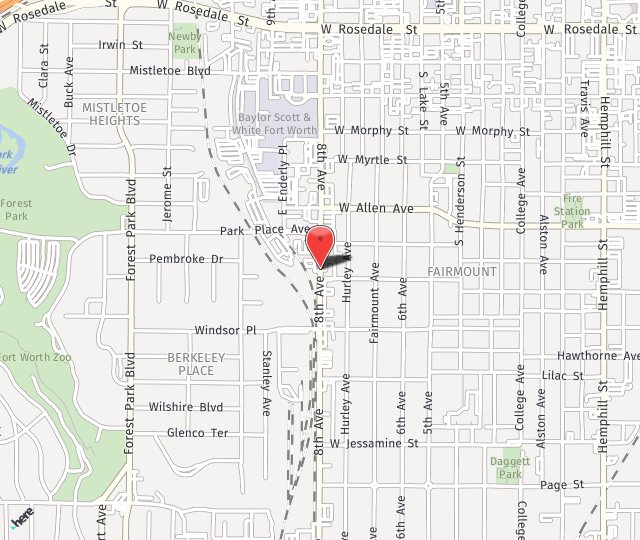Surgery For Prominent Ears – Otoplasty
The ears are almost fully grown by age 4. When ears are prominent, protruding more than normal from the head, affected people often become very self-conscious. Children and young adults begin concealing their ears. Boys may grow their hair long, and girls may stop pulling their hair back into pony tails. Otoplasty surgery is a great way to correct this problem and restore self-confidence.

What Causes Prominent Ears?
People who have prominent ears have cartilage that did not form correctly. A normal ear has a fold in the cartilage just in front of the rim of the ear (see the picture of the ear above). This is called the anti-helix. Most people with prominent ears have an anti-helix that did not form correctly. A second area, called the conchal bowl, may not form correctly and may contribute to a prominent ear. That’s the “bowl” of the ear near the ear canal. Excessive conchal bowl cartilage may make the ear stand out away from the head. Dr. Kunkel will identify the areas involved and discuss them with you during your consultation.
Otoplasty Surgery
Dr. Kunkel performs otoplasty surgery in an outpatient surgery center. The patient is put to sleep under the direction of an anesthesiologist (general anesthesia). The surgery typically takes about 2½ hours to complete. An incision is placed on the back of the ear, exposing the cartilage. The cartilage is sculpted into a new shape and sutures are placed internally to help maintain definition of the anti-helix. The conchal bowl is also addressed as needed. Additional sutures may be placed to pull the ear closer to the scalp. The incision is closed with dissolving sutures. A plastic cup dressing is placed to protect the ears and is worn for a few days.
What Is the Ideal Age to Do Otoplasty?
The ears reach full physical development before many other parts of the body. By age four or five, we know what our ears will naturally look like for the rest of our lives. Because the ears mature so quickly, otoplasty can be performed during early childhood. Parents often choose to schedule otoplasty before a child begins elementary school, which can promote better emotional well-being as they begin to engage with more children. Otoplasty during childhood can be advantageous provided that the child can understand the reason for their procedure and can follow the post-operative instructions that will help them recover well. While the ears are more pliable during childhood due to the softness of the younger cartilage, otoplasty can also be performed during adulthood.
How Should I Prepare for Otoplasty Surgery?
Patients of Dr. Kunkel receive detailed instructions to help them adequately prepare for their plastic surgery procedure. Strict adherence to these instructions paves the way to successful surgical outcomes. During the consultation for otoplasty, the doctor conducts a thorough consultation in which the patient's medical history and current health are discussed. An examination of the ears provides the necessary information to determine the potential benefit of the otoplasty procedure. If deemed necessary, the doctor may order pre-surgical lab tests to be performed weeks before surgery.
Before surgery, it is necessary to avoid using any medication or supplement that thins the blood. Examples include NSAIDs like ibuprofen, aspirin, and herbal supplements like Ginko Biloba. Teens or adult patients who smoke must quit weeks prior to surgery. Parents may receive directions for their children undergoing otoplasty, such as how to promote compliance with post-op care instructions and how to communicate to the child what to expect before and after surgery.
Will Otoplasty Surgery Affect My Hearing?
Hearing is unaffected by the otoplasty procedure. This surgery focuses only on the outer parts of the ear, far from the areas that are involved in hearing.
How Much will My Ears Relax or Change Position After Surgery?
It is not uncommon for the ears to change somewhat during a person's lifetime. After otoplasty, the cartilage may move very slightly due to minor loosening of the internal suture that holds the ear. The head and neck continue to grow into adulthood, which may have a mild impact on the appearance of the ears. Finally, age affects the cartilage and may cause the ears to look different over time. That said, all of the reasons that the ears may change are very normal to every person, not just those who have had otoplasty. The vast majority of patients who have ear reshaping never have to repeat the procedure, and they remain very happy with their appearance for many years.
Can Ear Pinning Come Undone?
It is necessary to carefully protect the ears during the initial stage of recovery. During that time, the sutures are holding the position of the ears. Over time, though, the cartilage takes on the new shape that was created. It should not revert back to its old position even if the sutures were to fail. Generally, we expect that the shape of the ears one-year postoperatively will be the shape of the ears for the duration of the patient's life, barring traumatic injury.
WHAT IS RECOVERY LIKE AFTER PROMINENT EAR SURGERY?
Initially the ears appear swollen and purplish. The skin may be numb. Swelling and bruising become less noticeable to others after about 3 or 4 weeks. Dr. Kunkel typically has patients wear a headband 23 hours a day for the first month. After that the headband may be worn at night only for another few weeks. Sporting activities should be avoided during the first month after surgery, particularly contact sports like basketball, soccer, lacrosse, field hockey, football, and volleyball. People involved in dance may become active after about two weeks, but the ears will be noticeably swollen during that time. Patients begin shampooing their hair on the second or third day after surgery.
Otoplasty Results
One of the most fun things about this surgery is seeing patients come to the office with their hair pulled back within a week or two after the surgery. Confidence often soars after otoplasty surgery, and many patients quickly begin wearing the hairstyles that they have wanted to wear. Dr. Kunkel makes a point of telling his adolescent patients to thank their parents for providing this surgery for them. Otoplasty surgery may be a profoundly rewarding experience!

Risks Of Otoplasty Surgery
Every surgical procedure includes risks. All operations, from hernia repairs to rhinoplasty to otoplasty surgery include risks of infection, bleeding, blood clots, and poor healing. Issues that are more unique to otoplasty surgery include differences in shape between the two ears, accumulation of blood under the skin that could require drainage, loss of the new shape of the ear due to a suture breaking, and long-term numbness of an ear.
Consult Dr. Kunkel for Otoplasty Surgery!
To learn more about Otoplasty Surgery or to determine whether you are a candidate for the procedure, please book a one-on-one consultation with the accomplished Dr. Kelly R. Kunkel! Call our office at 817.335.5200 or click here to send us a Consultation Request Form. Our practice looks forward to serving you!

